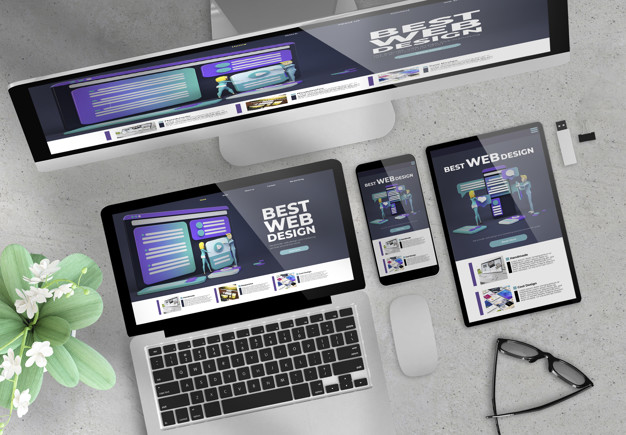Let’s get to the heart of the matter: how do we generate more SEO leads?
Of course, we’re not just after any kind of SEO lead; we want SEO leads that have a high conversion rate because the customers simply love us. Easier said than done, we know.
But wait: while the digital landscape is huge when it comes to changes, you reading this right now means you are also interested in making sure that your business is not left behind. So let’s get to it then: how do we make your website convert so you can get more SEO leads that actually buy your services?
UX = SEO
You may have read about this before, but it bears repeating: old school SEO is dead. Google is no longer interested in pushing up websites just because they have the right keywords on the page, or a rocking backlink profile. What they need is much, much more: in addition to good SEO, they need your website to outshine the others in terms of UX.
UX?! What’s that?
UX refers to user experience, or simply put, how people experience your website when they land on a page for the first time. When you think about UX, you must think of not just the content on the page, but all of the possible interactions that the user may have on the page itself.
Page designers are often at odds with SEO companies because SEO companies have a different idea of what’s an efficient website and designers are often after ease of use and aesthetics. Is there a way to unite these two? Of course. However, the SEO side and design side have to be willing to work together. Both components are equally important.
Before a design is even worked on, it’s important to look at the basic, four stages of UX design:
1. Context
2. User requirements
3. Solution-building
4. Evaluation
Context is Everything…Right?

Of course, context refers to the nuances of what people need from a website. If you are selling fancy paper bags for example, the context would be “people must be able to view and order fancy paper bags.” But that’s just the beginning, right?
Design is all about making expectations meet reality, and in many cases, it takes a lot of technical acumen to make that happen. We move on then to user requirements. And this is where is becomes really interesting (and challenging) for digital marketers and business owners.
Google supports the 4D model of UX, which is “discover, define, develop, deliver.” There’s what is called the challenge statement, which expands the “context” side of the previous process we mentioned. A challenge statement adds several layers to the context of use. Here’s an example:
“Develop a system for selling fancy paper bags, with focus on getting people to order different items from the website for marketing and other occasions of use, to be launched in the first quarter of 2020.”
We are still within the “context” side of things here. A viable goal is finite, reasonable, and workable. It shouldn’t be so big that you don’t know where to start, or what the point is really, of what you’re doing.
Picking the Customer’s Brain

Let’s take a look at user requirements. When you brainstorm on user requirements, you are basically outlining the different problems that your website wants to solve for your customer. Your knowledge of your customers would be helpful at this point: what makes them tick? What makes them interested enough to stay?
For SEO companies looking for leads, how do you get target businesses interested in the different optimization strategies that you employ? Of course, much of the effort needed would be to show them that you have what it takes to make their businesses break through the competition.
You definitely need to work with actual users here: interviewing them would be a great way to understand the inner workings of customer’s mind. Some questions that you might want to use are:
1. How do they finish a task when they are seeking to complete an activity in another website?
2. If they like the current flow from another website, what is it about that flow that makes them want to use it again?
3. Is there anything that they do not like about this particular flow?
4. What other solutions or products do they use to complete their tasks? In the same vein, what do they like about these solutions, and what don’t they like?
5. If they could have all the power in the world to make the process more desirable or at least easier, what would it be?
Finally: Creating the Solution
Creating the proper solutions to come up with the best possible UX of a website requires some amount of brainstorming from the entire team. Here are our recommendations to get that started.
1. Fold a piece of paper into eight segments and start creating what is called a design wireframe. Basically you are brainstorming on paper, visually, so you can tell others about your ideas.
It’s easier to explain a design concept (obviously) when you have an image of it. Members of the team can just vote about what they think are the best ideas.
2. After storyboarding the idea and getting everyone aboard the new design concepts, it’s time to work on creating a prototype. Create a prototype with the intent to see what works, and how the design behaves when people use it.
The prototype should also be as believable as possible, so if you are working in an environment that involves a team that needs to be happy with the purported output, put your design’s best foot forward in the prototype.
3. When you are ready to create a working model of the design, be sure that you are willing to evaluate it.
Time for Evaluation
Evaluating a new design is actually simpler than what you might think. Apart from using folks in the team, you can also have other people use the website and ask them questions after. The following evaluation questions will help:
1. What did you like about the working model or prototype?
2. What is it that they don’t like about it?
3. Are there any pain points along the way?
4. What makes this kind of flow work for you?
5. What prevents this flow from working for you?
6. Would there be anything that they would like to improve if they have the power to do so?
7. Does the current design actually meet the needs of the user?
Do you have any ideas about how UX can be improved? Don’t forget to comment or send it to us and we might feature it later on.




